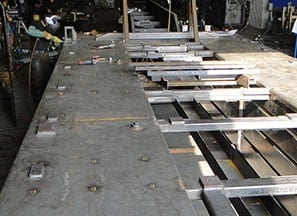Aggressively adopting advanced technology has been a strategy – across all Schaffer Manufacturing metal fabrication operations – since the early days of the company.
When it comes to utilizing machine automation to achieve tightly controlled, high-volume production, it’s well established that European manufacturing has the longest track record. So, one way that Schaffer evaluates automation technologies and best practices is to stay current on what is taking place in European factories
Schaffer confirmed its decision to be a leader in production automation – even as a small fabrication company – following our first trip to observe several German manufacturers and the advanced technologies they routinely deploy. Seeing the most advanced technology in operation on the plant floor continues to inform our equipment and technology strategies.
In fact, as a Schaffer team prepared for another Germany trip in early May this year, the company was setting up the first U.S.-installed TRUMPF TruPunch 2000 to be combined with SheetMaster Compact automation for unmanned loading/unloading of raw material and finished parts. The new punch offers all of the optimized part quality and machining flexibility that puts TRUMPF on the leading edge of punch technology. Automation enhances the Schaffer capability to offer OEMs cost-effective sheet metal solutions (on steel up to ¼-inch) for medium- and large-scale production runs.
Schaffer was also making metal processing automation a priority in 2014, when our TRUMPF 2D TruLaser Series 5030 machine became one of the first 5,000-watt fiber laser systems to go online in the Midwest region. The powerful and precise fiber laser technology enables fast processing of mild steel, stainless steel and aluminum up to 1” thick. In addition to optimizing precision by removing manual operation variability, automated laser production gives Schaffer OEM customers access to “lights out” operating efficiencies that can help them achieve a lower per-piece cost on high-volume sheet metal projects.

